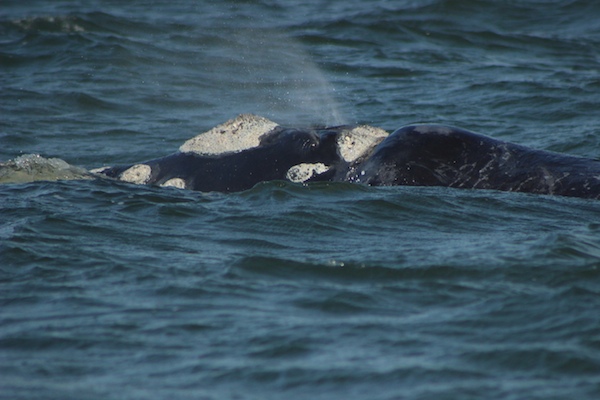The great whales are indicators species that have a lot to say about marine and coastal biodiversity, according to Lisa Bassett, author and professor at the University of Oregon School of Communication and Journalism.
Today, seven out of 13 species of great whales are listed as endangered or vulnerable because of commercial whaling (despite an international moratorium); ship strikes; oil and gas exploration; military sonar vessels; pollution; disease, and climate change,” Bassett reminds us.
As a professor of journalism, Bassett knew that by documenting an environmental problem, you can become part of the solution. This was the concept behind a four-week study abroad program offered by the University of Oregon (OU), entitled Nature & Culture: Multimedia Storytelling in Uruguay. This astonishing and exciting program focuses on the environment, traditional cultures, sustainability and conservation.
 The flagship program occurred in 2013, when Bassett led a group of UO students to Uruguay to create a multimedia project entitled The Route of the Whale. The project explored the route from its beginning in the hillside town of Piriapolis to the Brazilian border at Chuy. The students investigated environmental issues and solutions to those issues, in marine biology, conservation and sustainability. They did their work both in the classroom and in the field with Uruguay’s leading experts.
The flagship program occurred in 2013, when Bassett led a group of UO students to Uruguay to create a multimedia project entitled The Route of the Whale. The project explored the route from its beginning in the hillside town of Piriapolis to the Brazilian border at Chuy. The students investigated environmental issues and solutions to those issues, in marine biology, conservation and sustainability. They did their work both in the classroom and in the field with Uruguay’s leading experts.
The poster children of this effort were a type of baleen whale called the Southern Atlantic Right Whale. Right whales are large – up to 50 feet long and 60 tons in weight — and extremely rare in modern times since their populations have been eroded severely by centuries of unregulated whaling.
In 2000, marine biologist Rodrigo Garcia Pingaro founded the non-profit group, Organización para la Conservación de Cetáceos (OCC), in order to raise awareness of the whale in Uruguay, and protect the remaining right whales. He helped students from his own small town in Uruguay to prepare a bill to send to the legislature to make the Uruguayan coastal waters (through which the right whales pass) a whale and dolphin sanctuary.
Bassett’s students documented Pingaro’s efforts, as well as their impact on the coastal villages along the whales’ route. They took photos, did interviews, and prepared videos of the OCC’s work, the villages along the route as well as the whales themselves. This was put together in a multimedia presentation online, which can be viewed at www.routeofthewhale.org.
The students timing was impeccable. While they were in Uruguay, the bill was introduced to the Environmental Committee and Uruguayan Parliament and, on September 3, 2013, the parliament unanimously voted (62-0) to approve the whale and dolphin sanctuary. This watershed moment marked Uruguay’s increasing focus on environmental health in the developing nation.
Lisa Bassett and her team were recognized by the Society for Professional Journalists in 2014, when they were named the national winner in Online In-Depth Reporting for Along the Route of the Whale.
Bassett, who continues to organize opportunities for UO students to report on environmental issues abroad, is pleased with the success of the website. “My faith in environmental multimedia on an international level,” she says, “has taken a quantum leap!
Below is a video from the project featuring Rodrigo Garcia Pingaro, founder of Organización para la Conservación de Cetáceos (OCC).
UY 2013 – The Route of the Whale from SOJC on Vimeo.
Website: RouteOfTheWhale.org
 Living in France and Northern California, Women Of Green contributing writer Teo Spengler is an attorney, novelist and writer, deeply committed to the environmental movement. Spengler holds a Master of Arts in creative writing from San Francisco State University and a Juris Doctor from UC Berkeley. She is currently a candidate for a Master of Fine Arts in fiction. She writes for Demand Media and EHow in the areas of legal advise, travel, exploring nature, and gardening.
Living in France and Northern California, Women Of Green contributing writer Teo Spengler is an attorney, novelist and writer, deeply committed to the environmental movement. Spengler holds a Master of Arts in creative writing from San Francisco State University and a Juris Doctor from UC Berkeley. She is currently a candidate for a Master of Fine Arts in fiction. She writes for Demand Media and EHow in the areas of legal advise, travel, exploring nature, and gardening.
